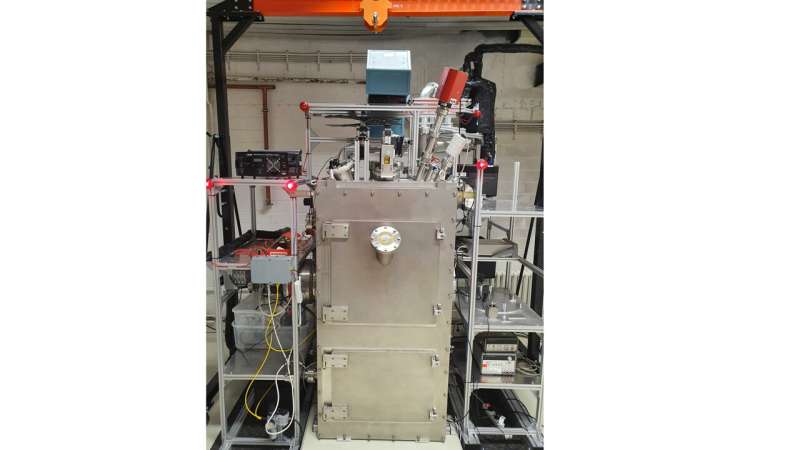The new chamber, which will simulate space-like conditions and has 14 associated instruments to measure comet properties. Credit: Kreuzig et al.
Comets are icy and dusty snowballs of material that have remained relatively unchanged since they first formed billions of years ago. Studying the small bodies provides clues about the formation of the solar system.
In Review of Scientific Instruments, researchers from the Technische Universität Braunschweig, the Austrian Academy of Science, the University of Bern, the German Aerospace Center, and the Max Planck Institute for Solar System Research developed a laboratory to simulate comets in space-like conditions.
The goal of the international research group, the Comet Physics Laboratory (CoPhyLab), is to understand the internal structure of comets, as well as how their constituent materials form and react. While comets are made of ice and dust, the composition and ratios of that material remain a mystery.
Many of the lab's future experiments will involve creating sample comet materials with differing compositions. By testing those materials in the space-like chamber, the researchers can compare each sample to what has been observed on actual comets.
To accomplish this, the scientists place a sample in their chamber, then pump it down to low pressures and cool it down to low temperatures. One window of the chamber lets in radiation from an artificial star, which heats the comet material much like it would in space.
"Before [this project], every group was using different samples. That made it very hard to compare if what they were seeing was the same as what we were seeing," said author Christopher Kreuzig. "A major goal of this project is to establish a comparable standard for comet experiments where everyone is using the same equipment and production protocol for the sample material."
Combining 14 instruments into one chamber allows the scientists to measure the comet material's evolution, as well as the conditions inside the experiment, all at once.
In space, radiation from the sun causes ice to evaporate and particles to fly away from comets, creating a tail that is visible on Earth. In the chamber, high-speed cameras track any particles that fly away from the sample. The chamber also uses a unique cooling system to accommodate a scale that can detect if those same particles land near the sample and track gas evaporation in real time.
"Underneath our sample sits a scale, which is capable of measuring the weight of the sample over the whole experiment time," said Kreuzig. "You can really see how much water ice or CO2 ice we lose over time due to evaporation."
The team has completed construction of the lab and is now optimizing their sample production. They are planning the next big experiment run for early 2022.
More information: C. Kreuzig et al, The CoPhyLab comet-simulation chamber, Review of Scientific Instruments (2021). DOI: 10.1063/5.0057030
Journal information: Review of Scientific Instruments
Provided by American Institute of Physics
























